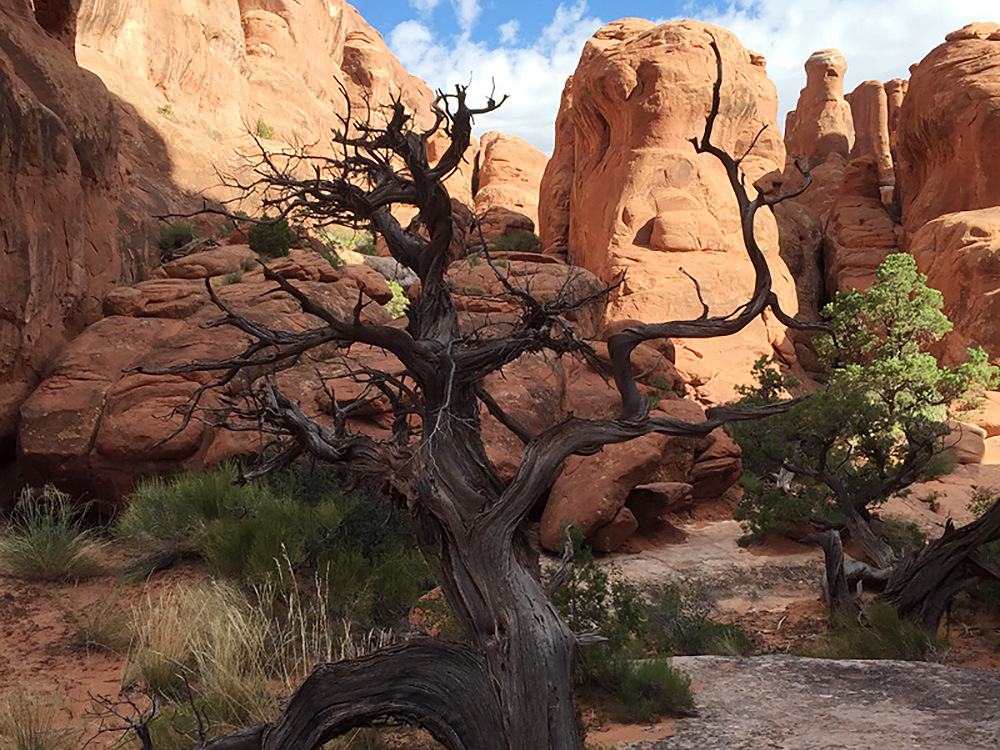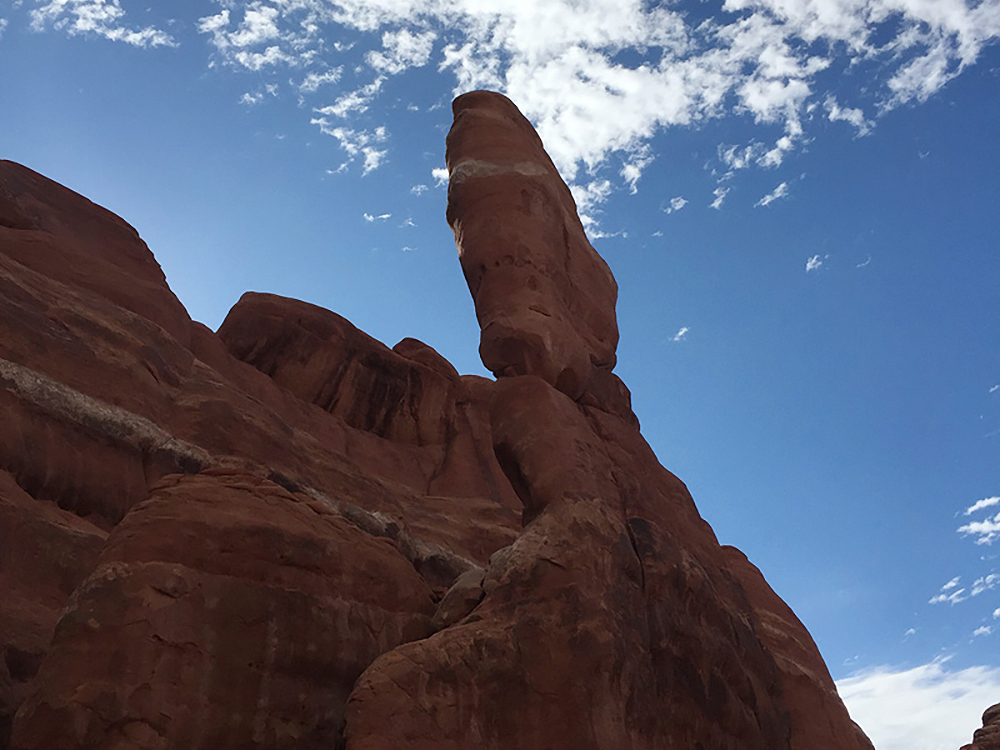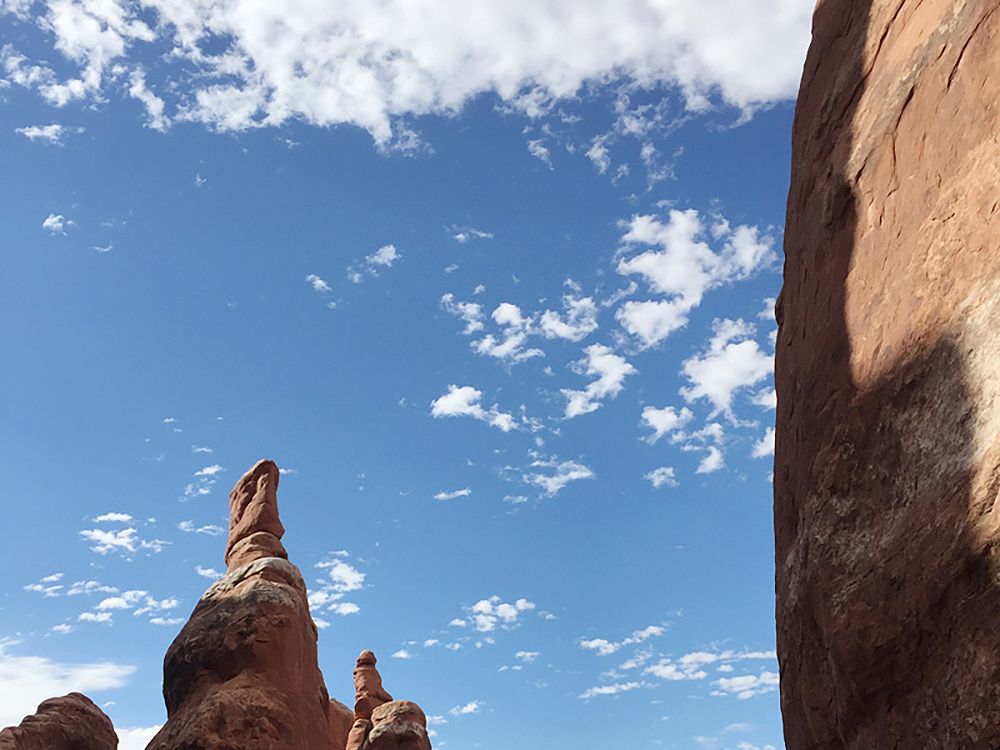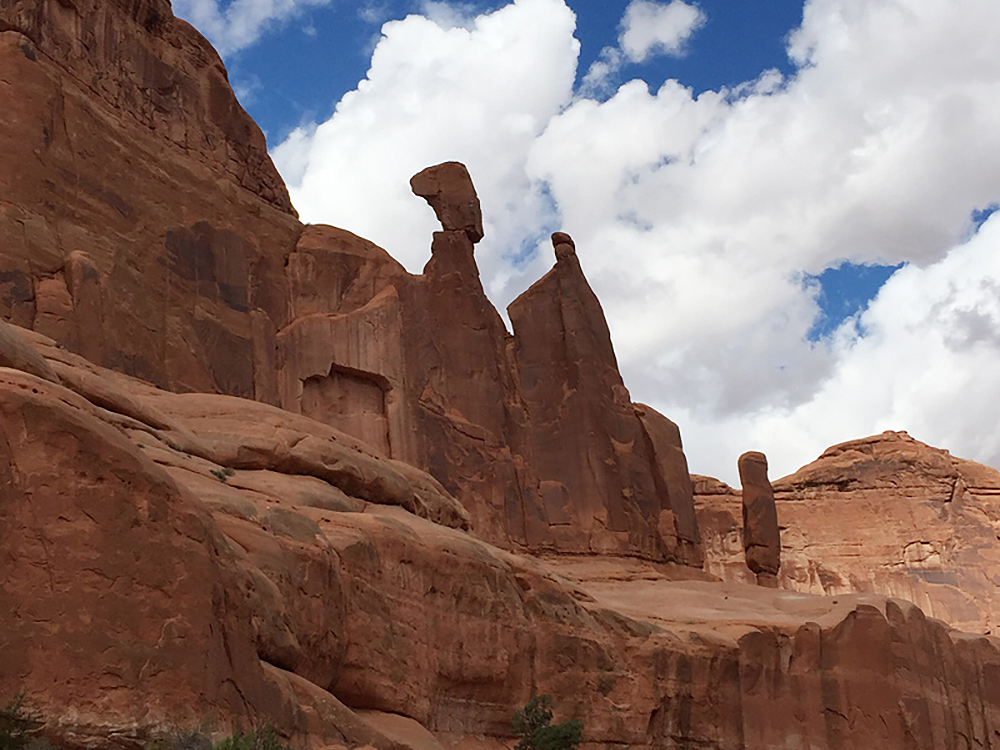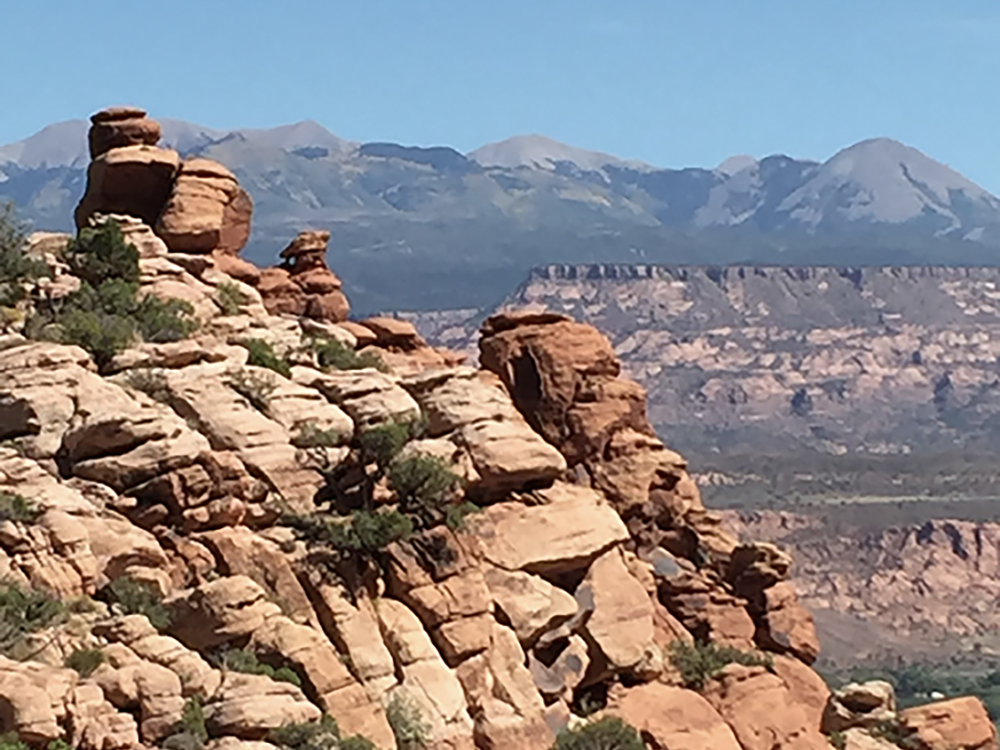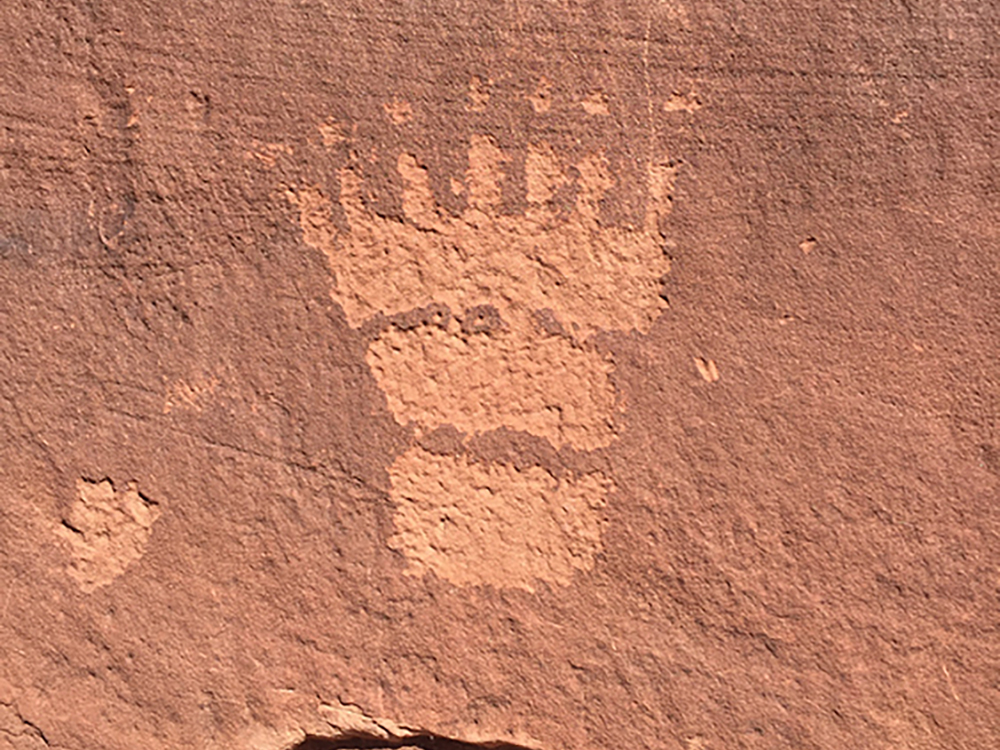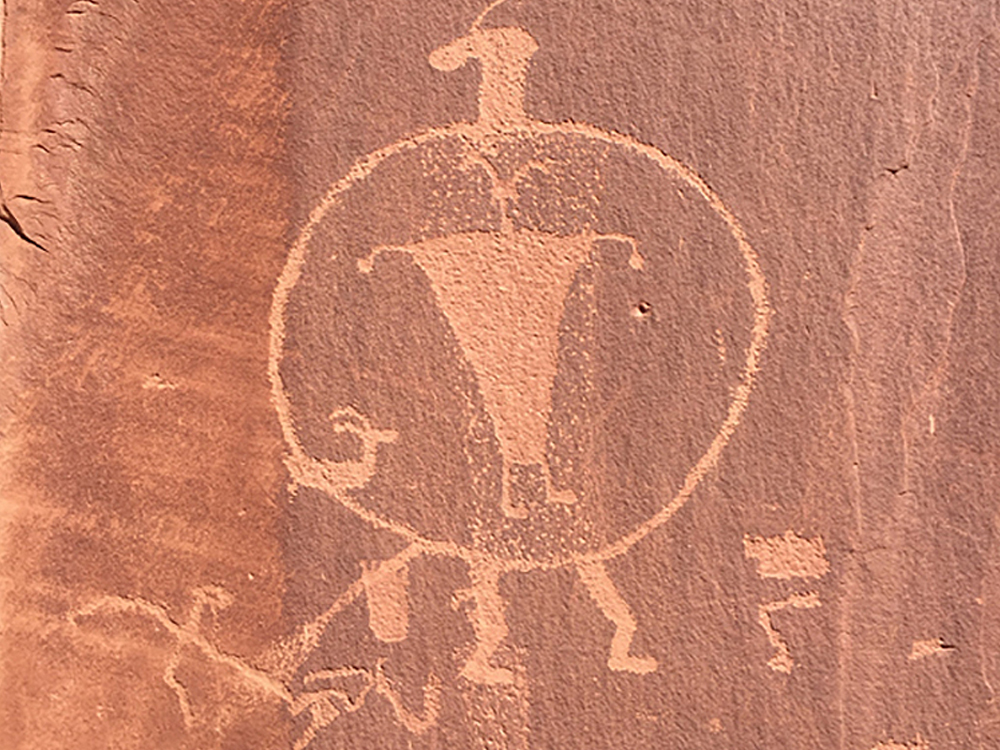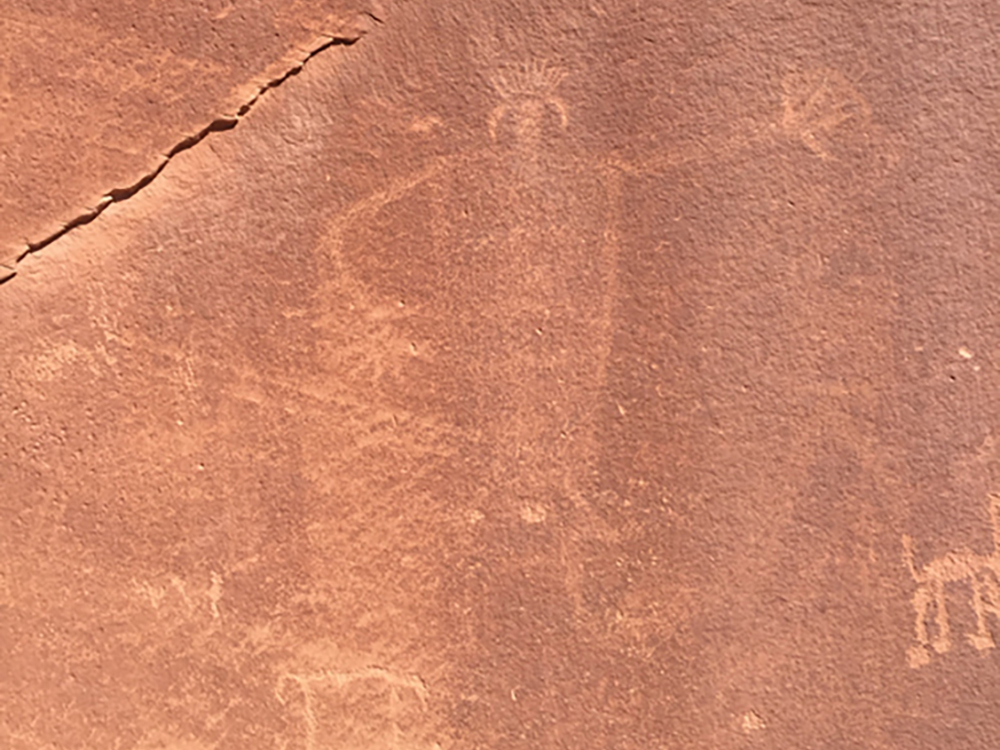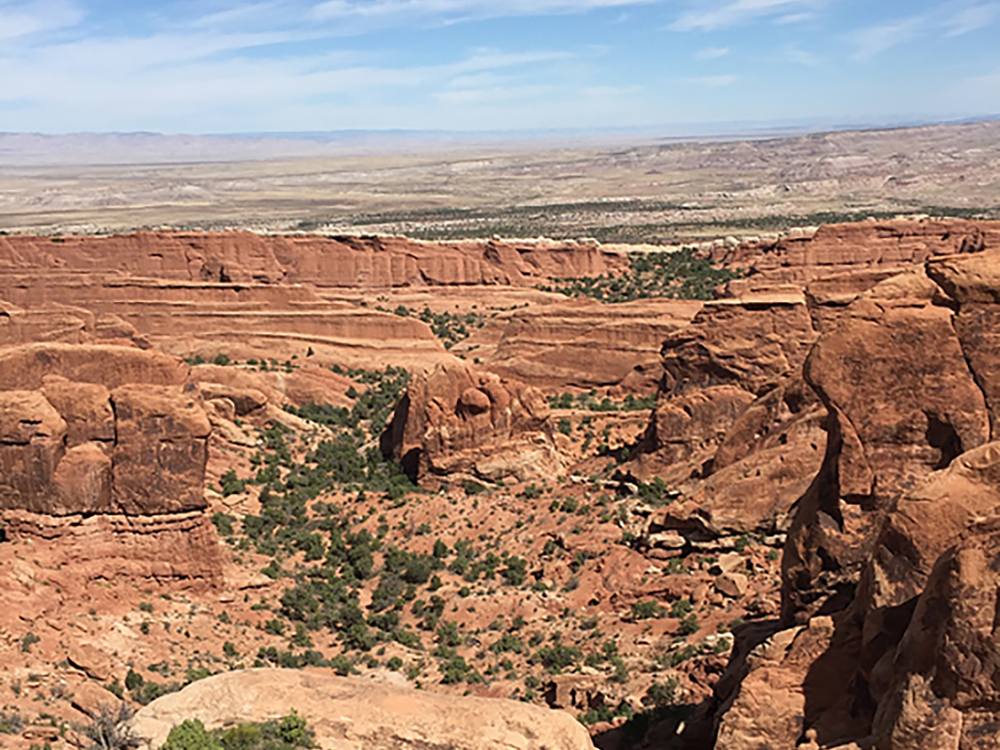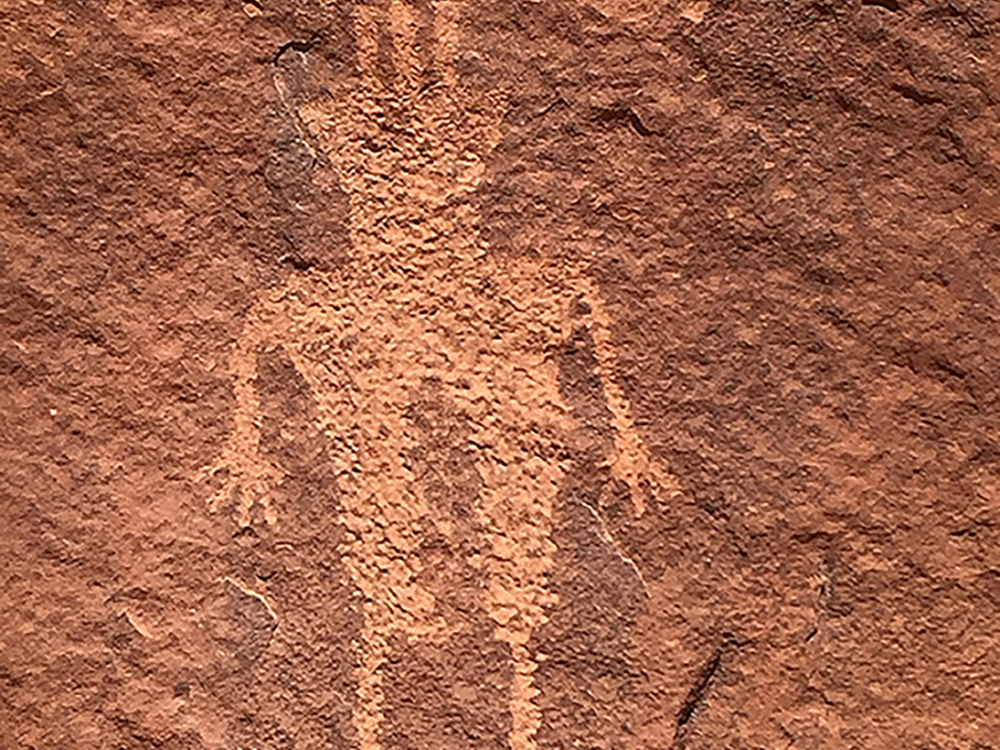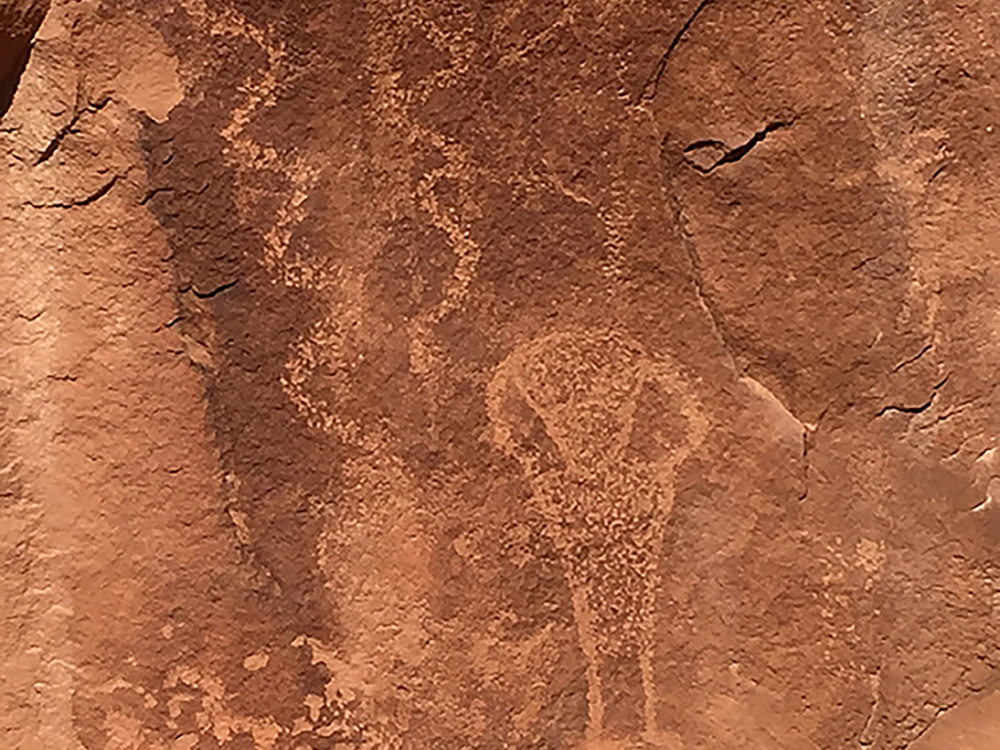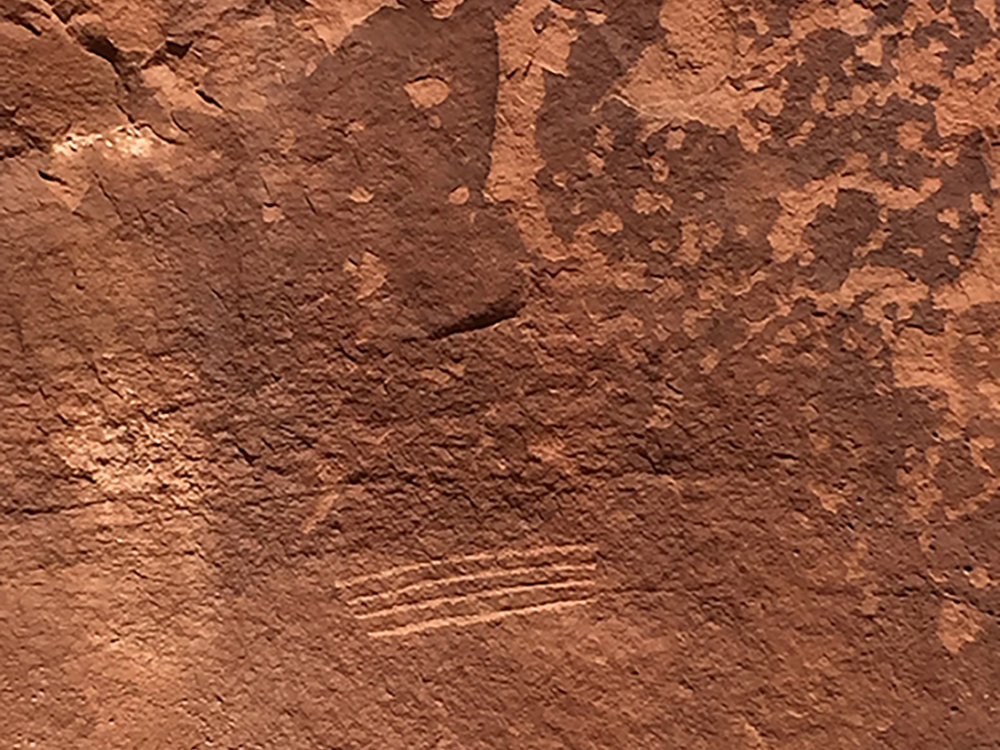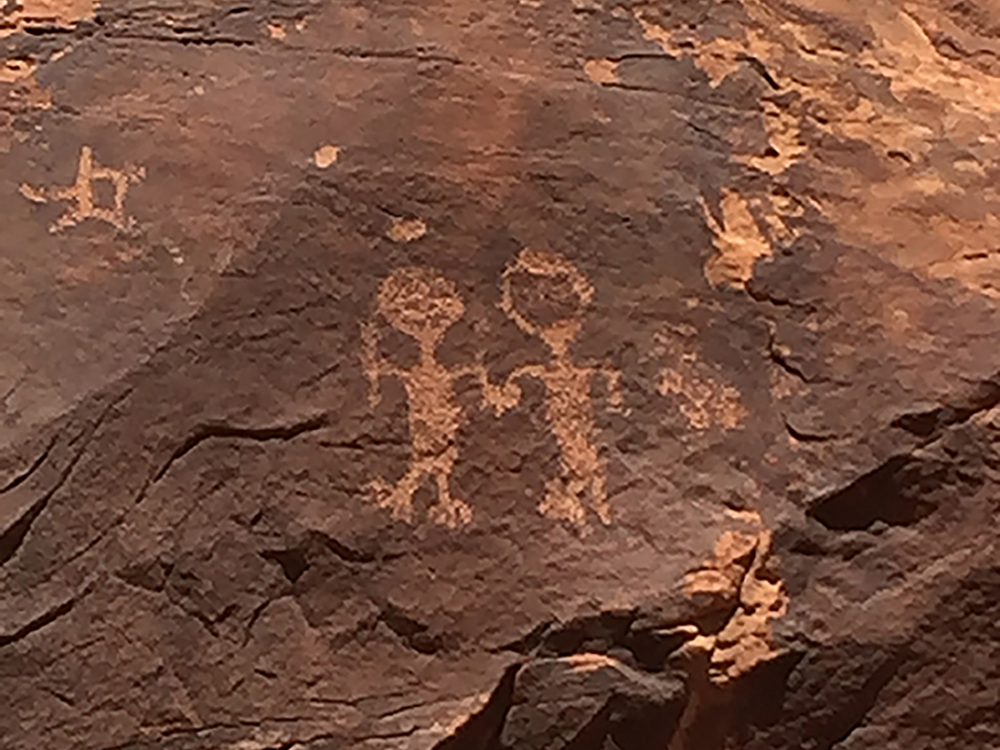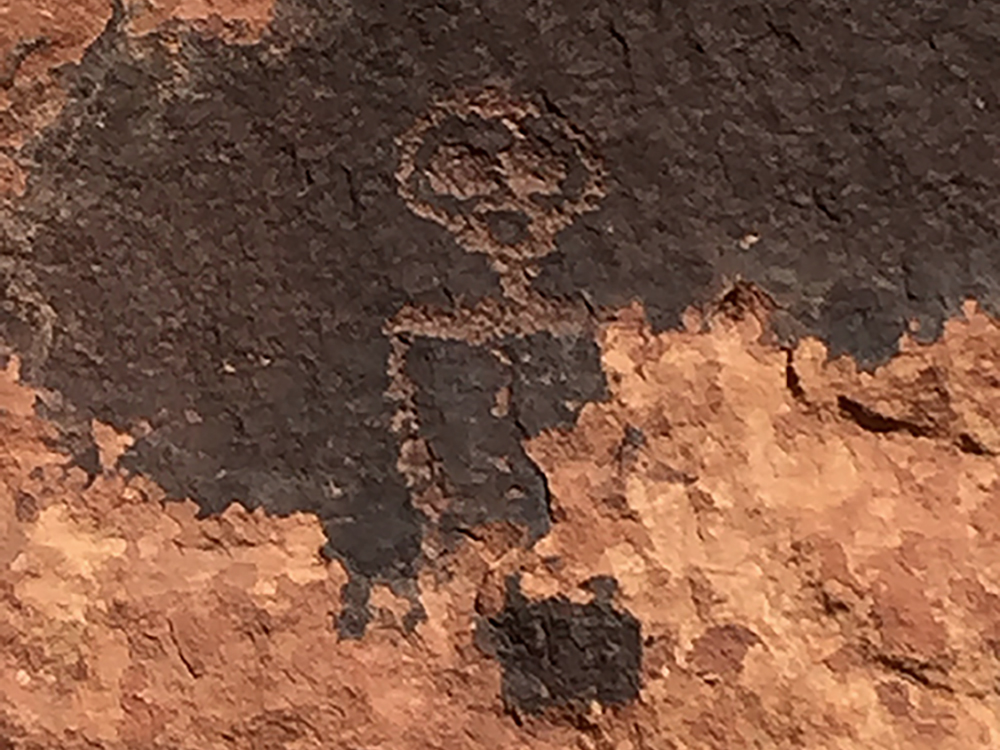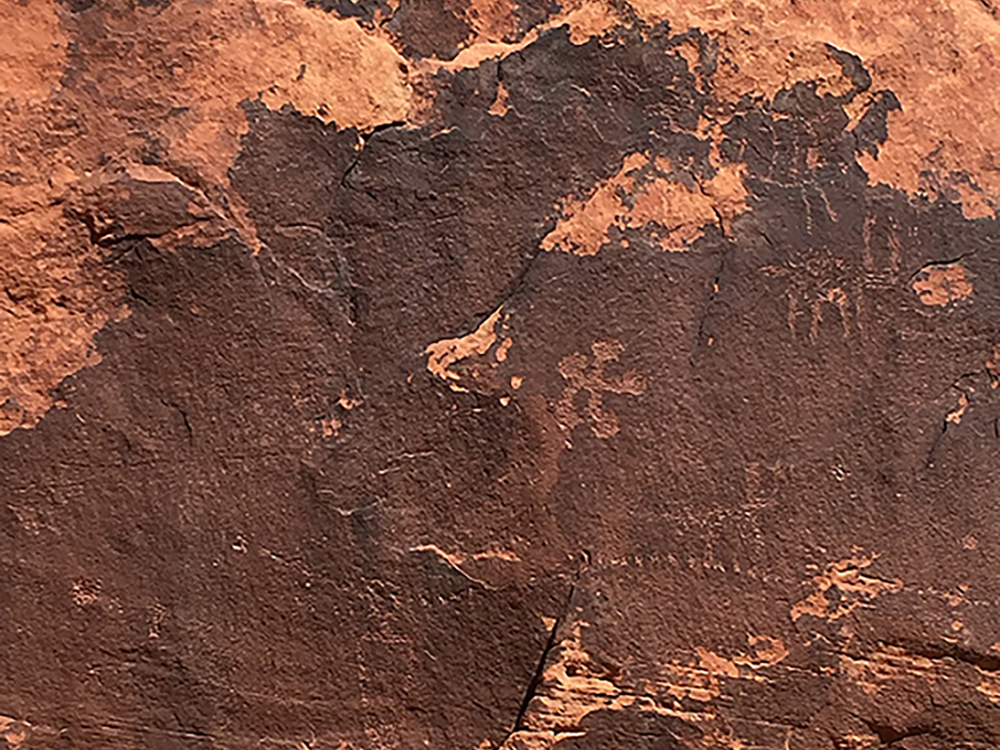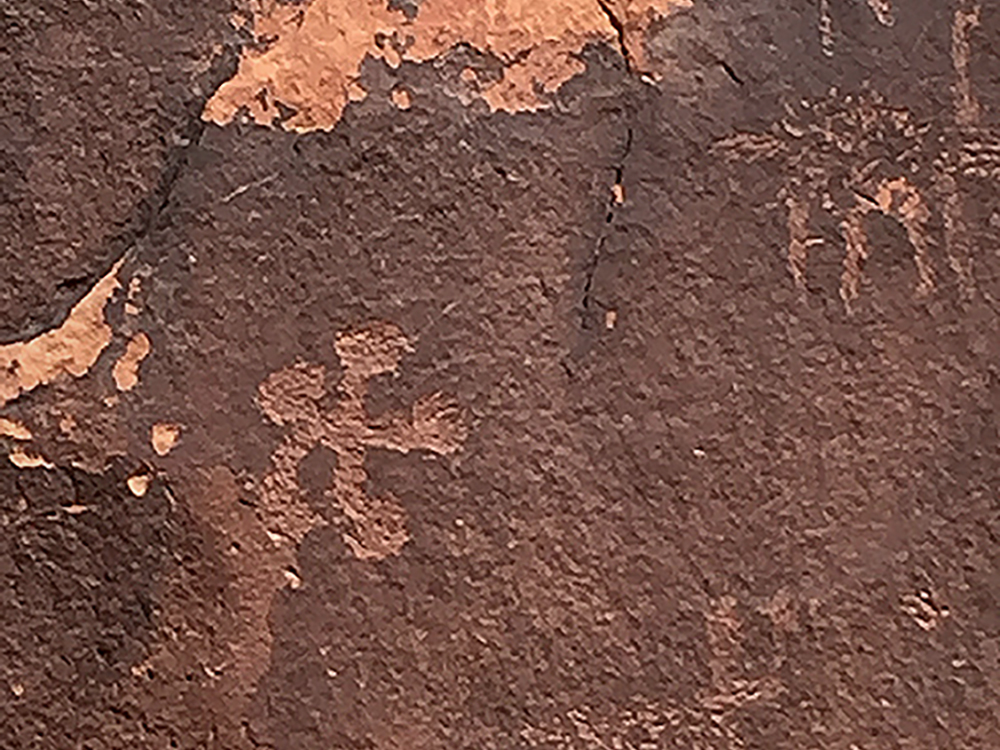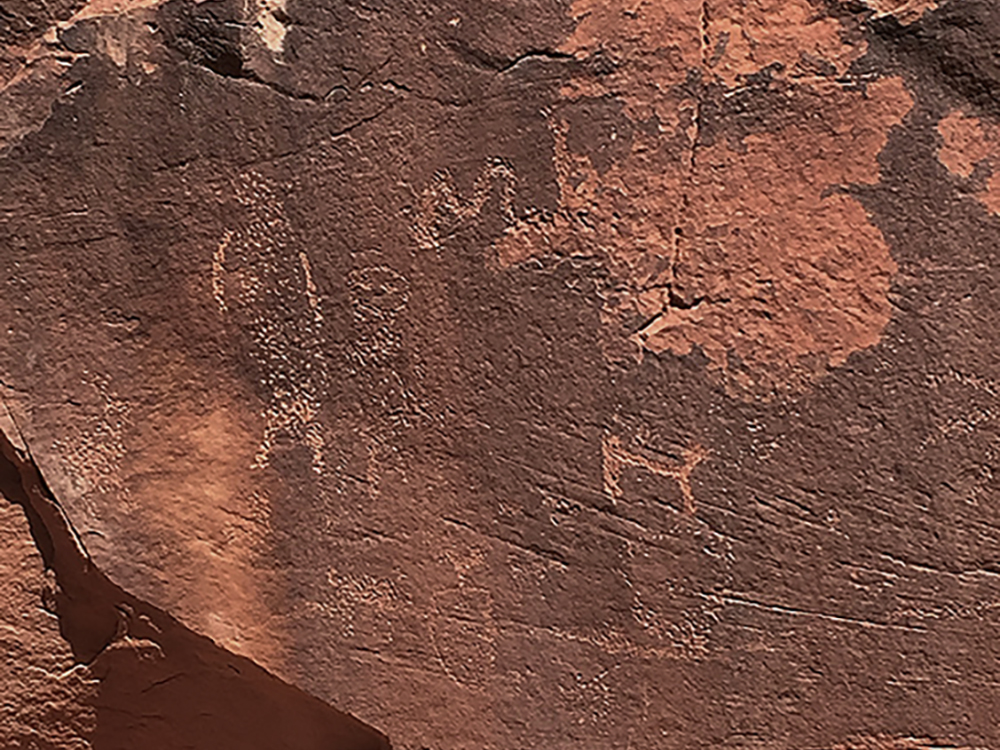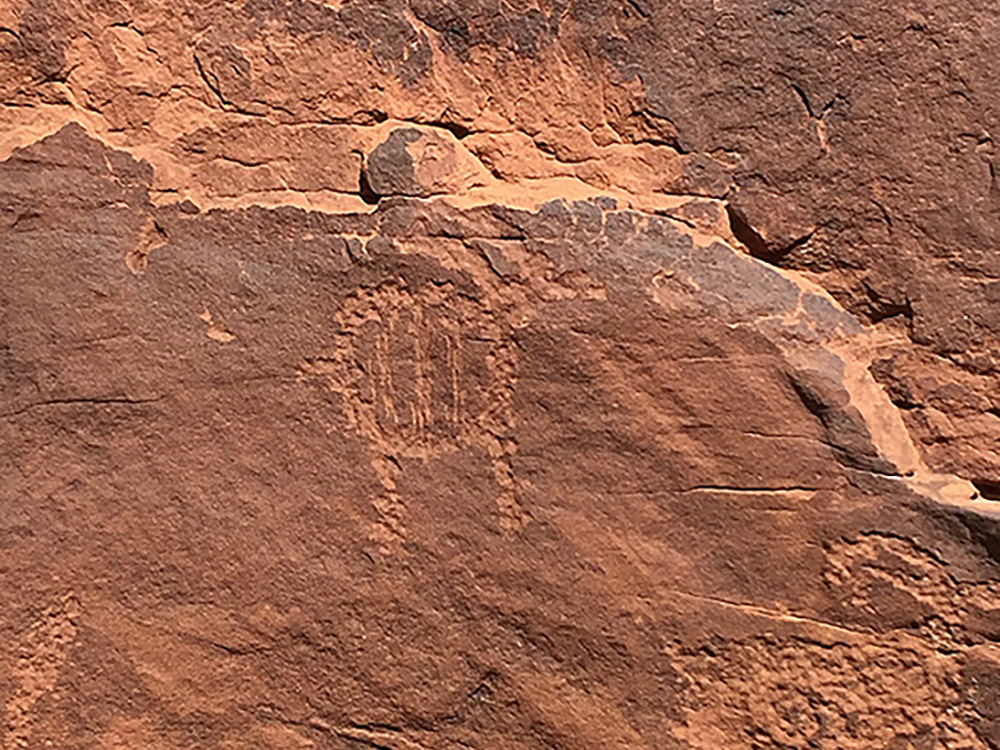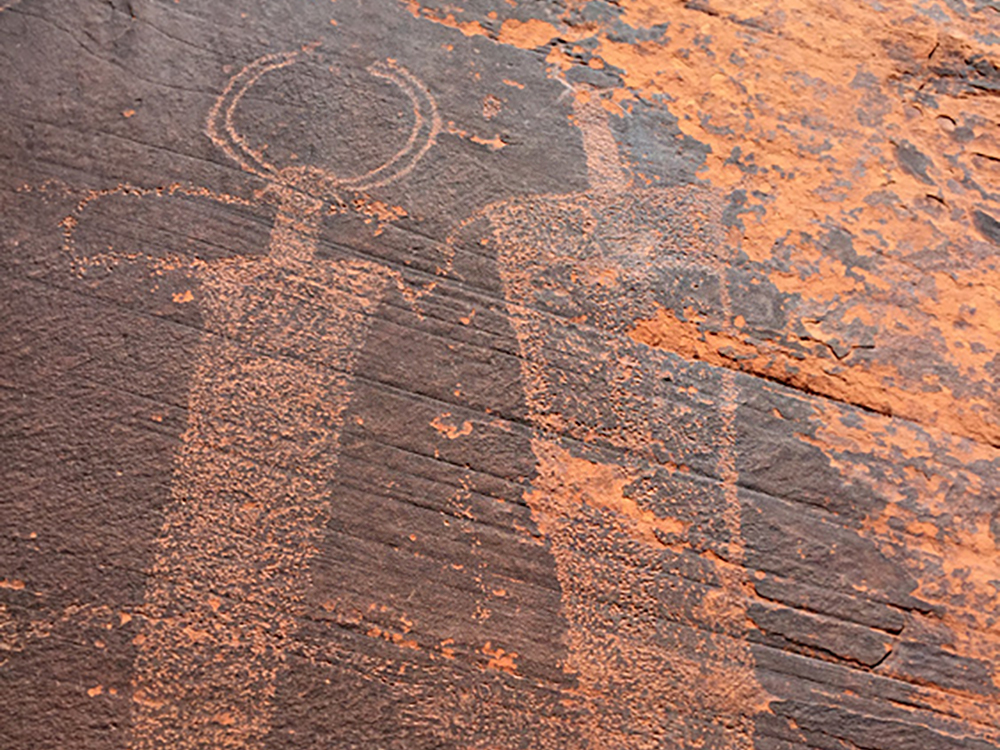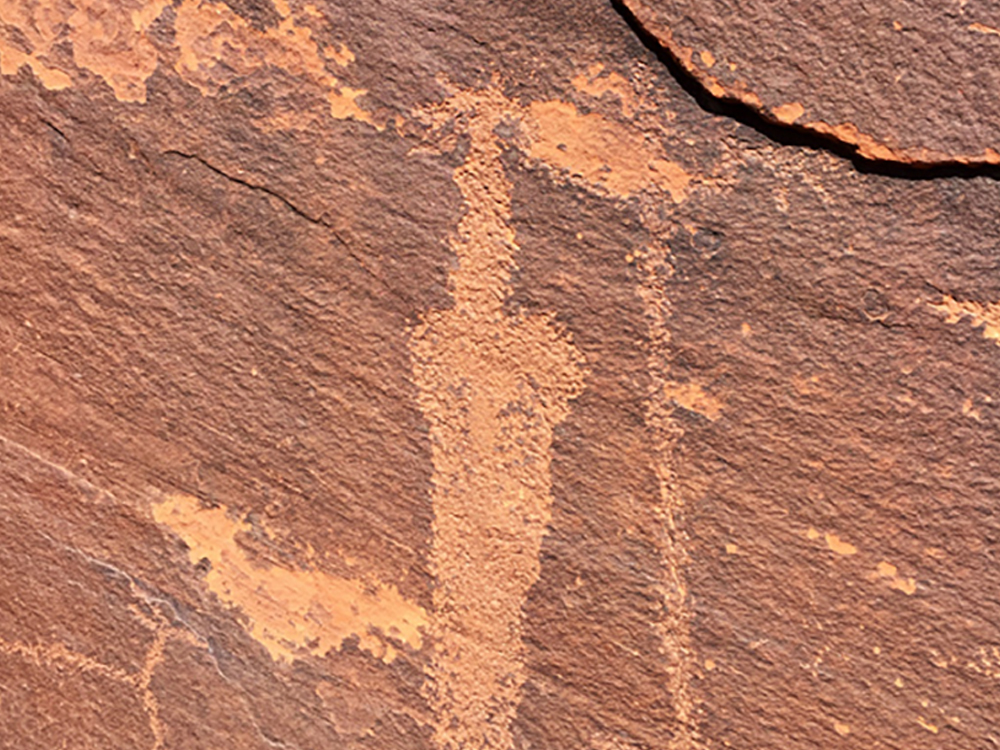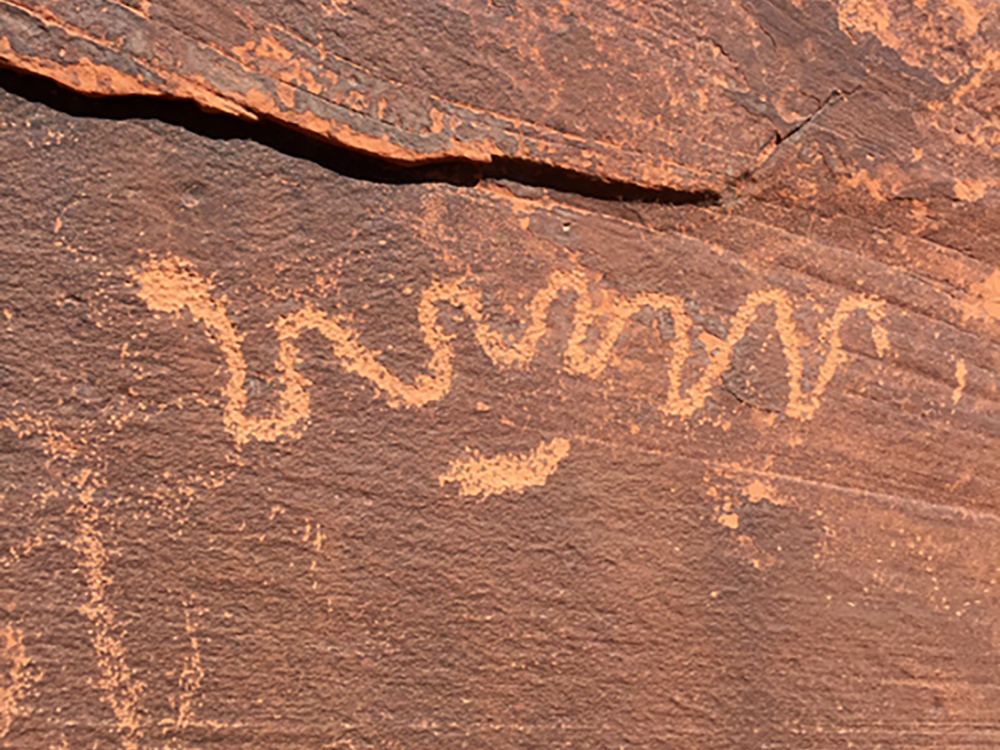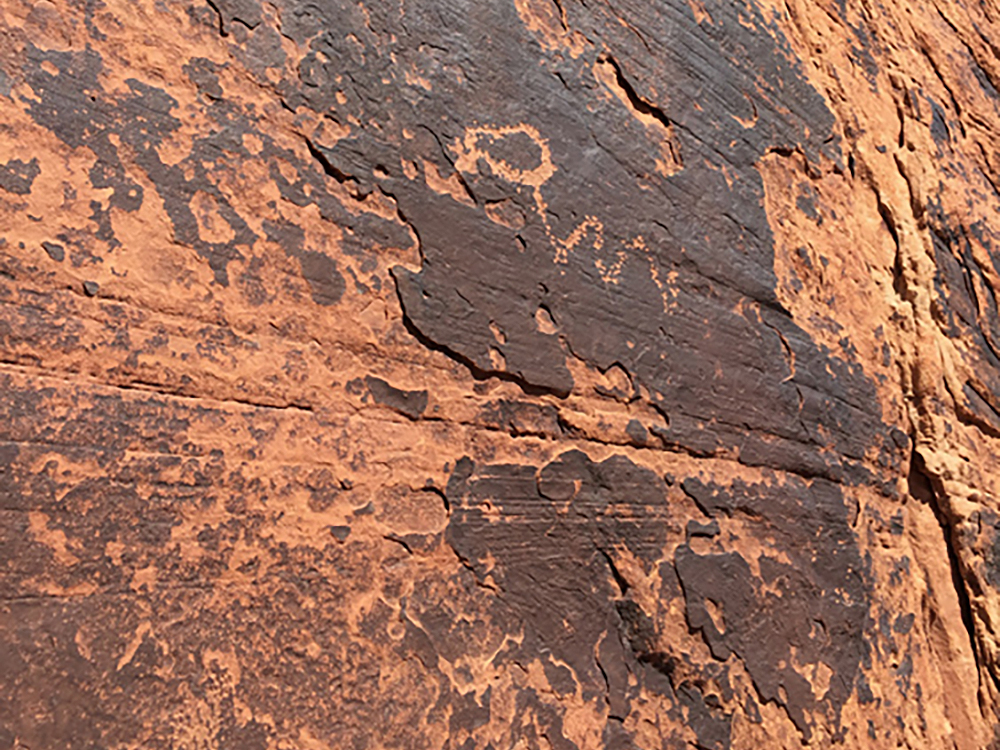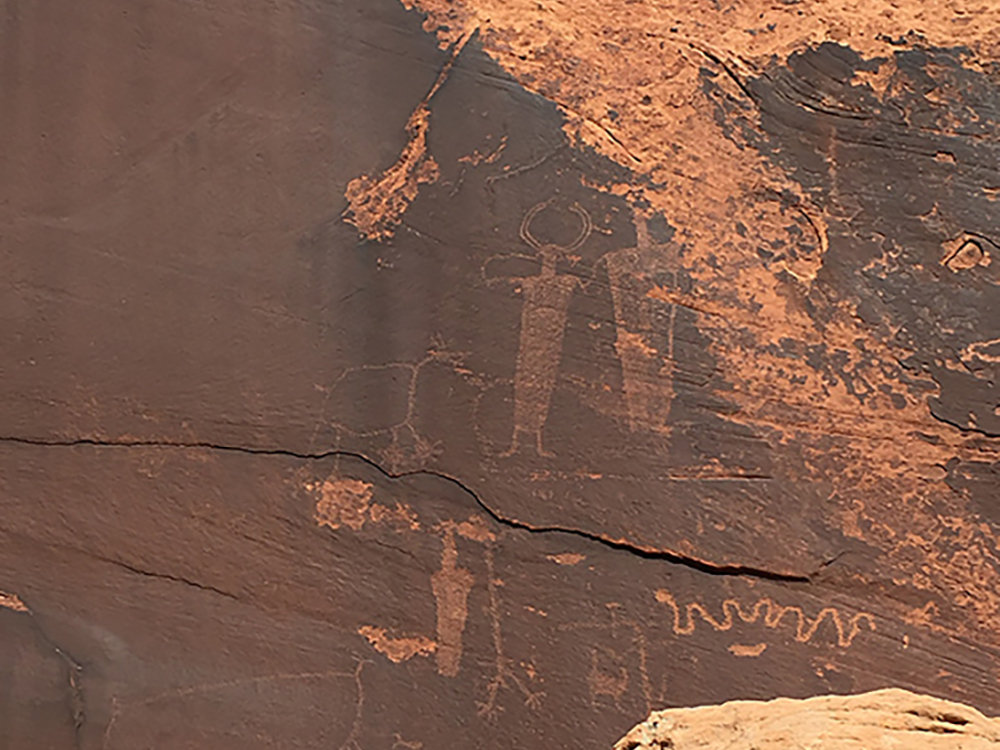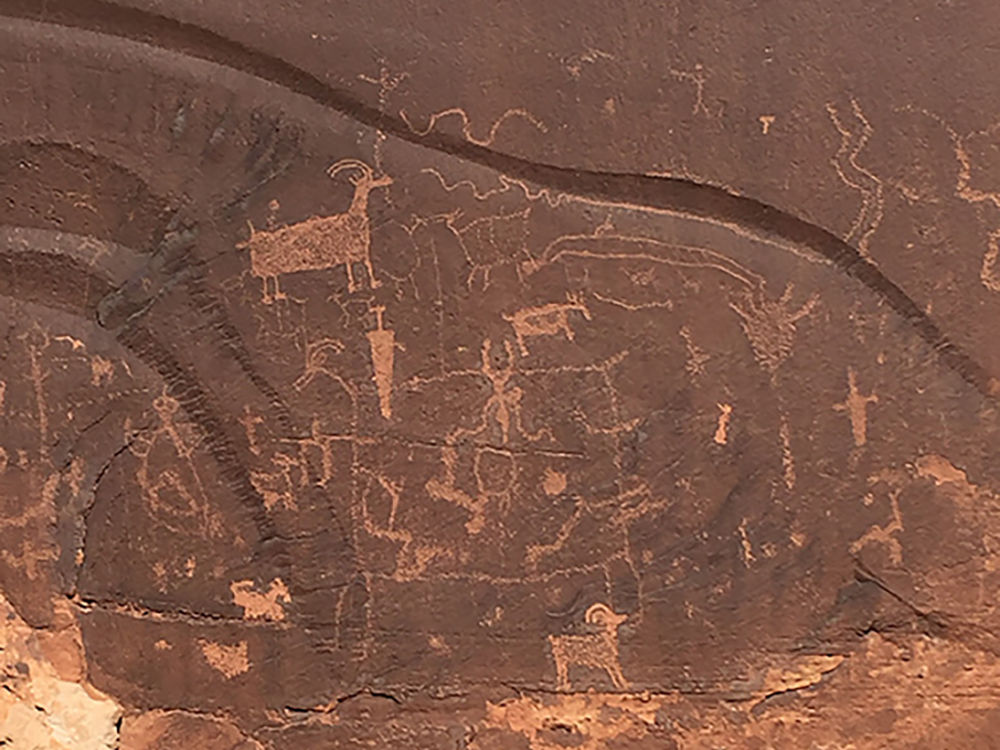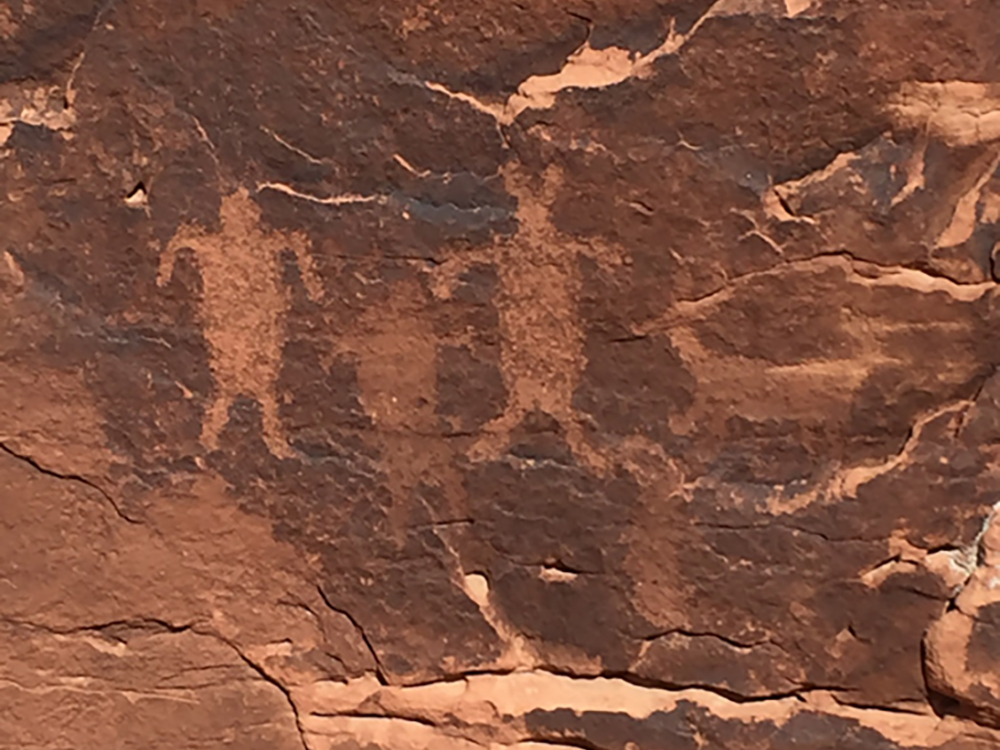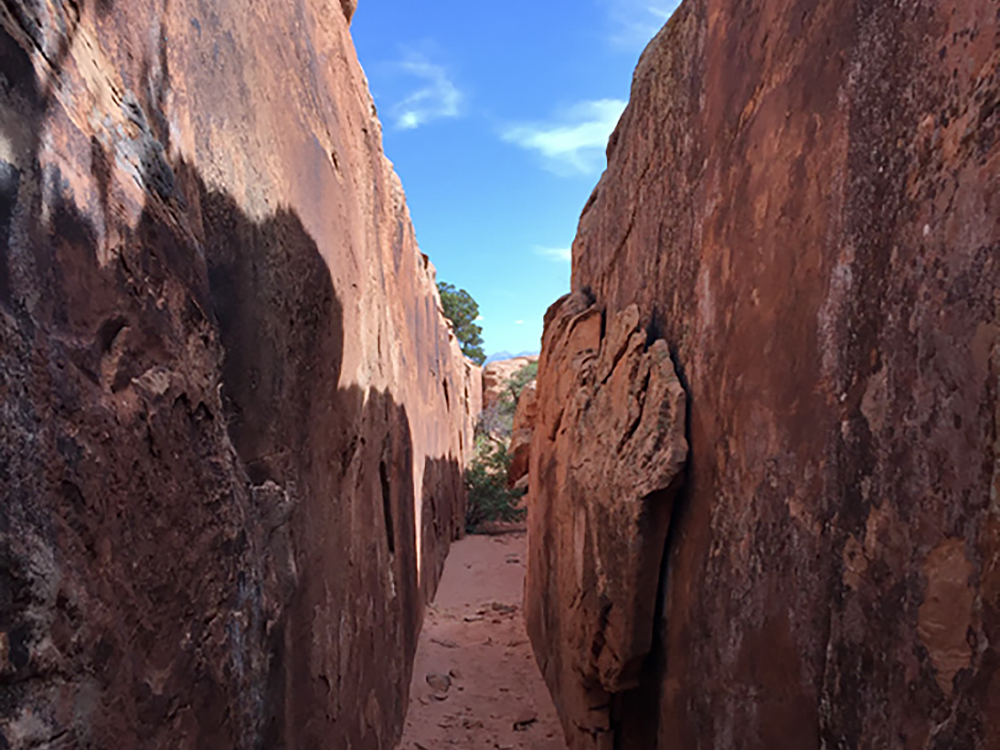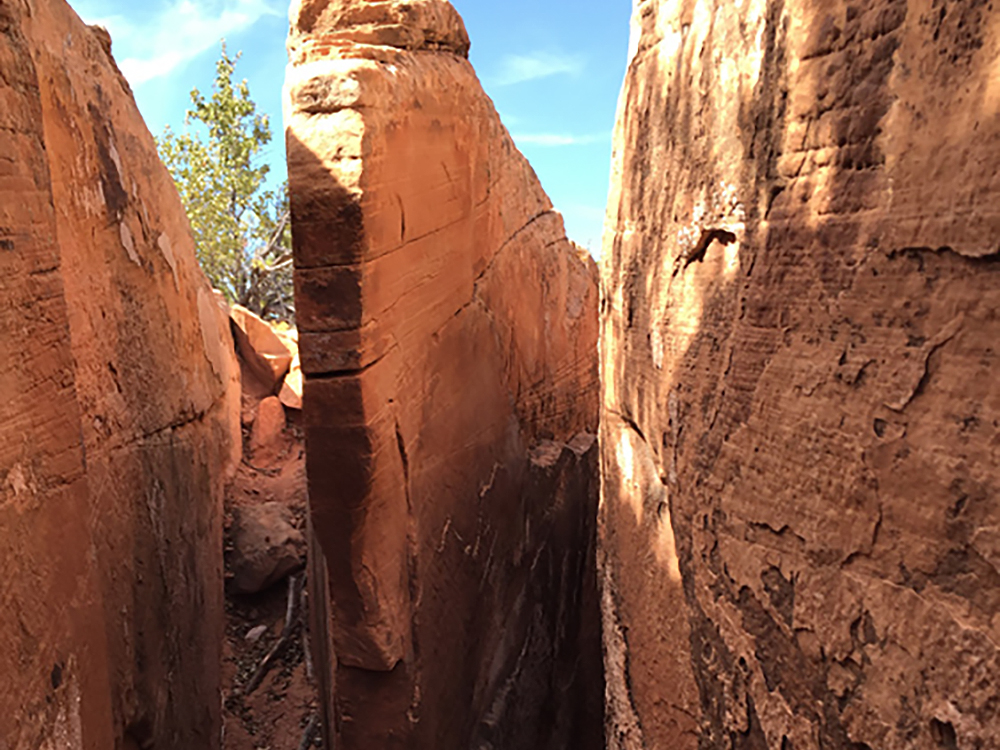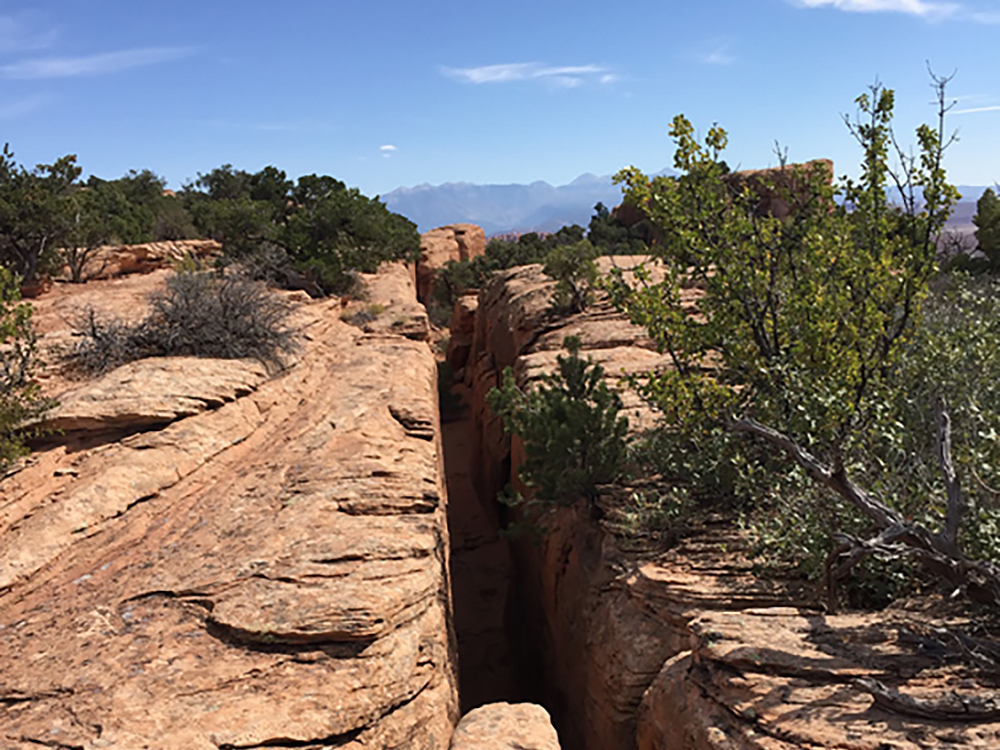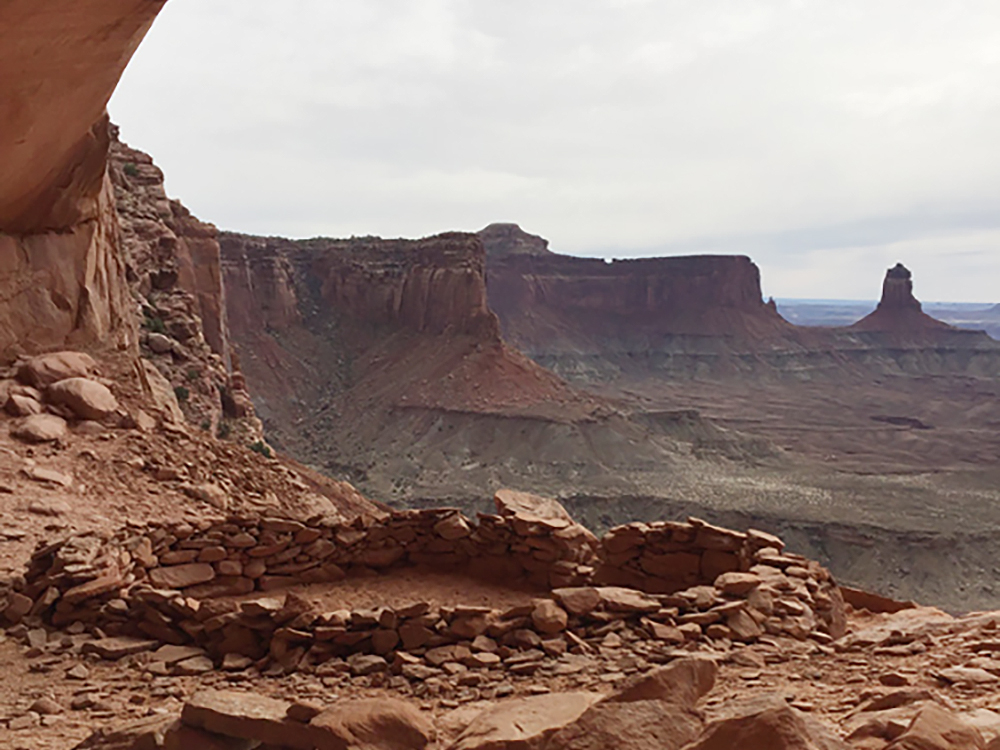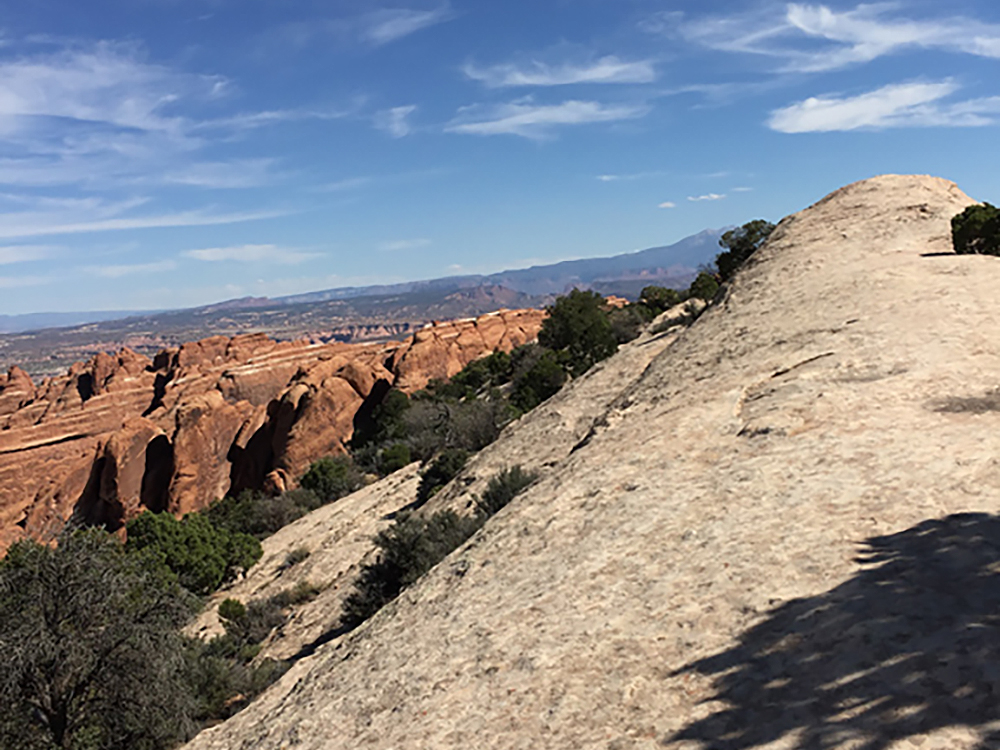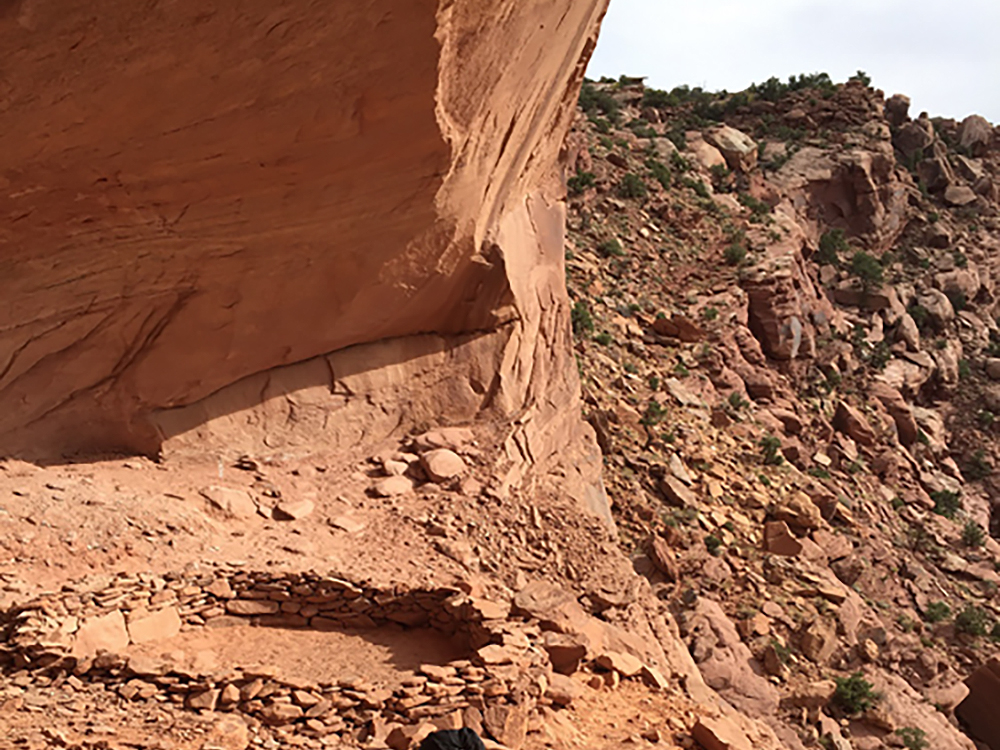


D. Micah Hatcher, photographer and Guide for Hike Moab) as FunJunkie, is working with the Bradshaw Foundation to present the rock art of the Moab region in Utah, as part of the American Rock Art Archive.
The rock art of the Moab region, under the auspices of the Bureau of Land Management, includes both petroglyphs (motifs pecked, ground, incised, abraded, or scratched) and pictographs (paintings using mineral pigments and plant dyes). Both techniques may have been used together, as shown by the faded painted images revealing the accompanying pecked image.
The rock art sites of Moab are unique, but with recurring patterns and motifs. Styles vary from place to place, from people to people and over time.
The rock art was produced by a number of prehistoric and historic peoples over thousands of years. A big game hunting people, known as Palaeo-Indians, are considered to be the first humans in the area, whose game included now-extinct Pleistocene fauna such as mammoths and mastodons. The rock art was produced by a number of prehistoric and historic peoples over thousands of years. A big game hunting people, known as Palaeo-Indians, are considered to be the first humans in the area, whose game included now-extinct Pleistocene fauna such as mammoths and mastodons.
Following this came the Formative cultures. The Anasazi, whose sedentary culture was based south of Moab in the Four Corners area, cultivated corn, beans and squash as well as wild resources such as pinion nuts, grasses, bighorn sheep and deer. The Fremont, contemporary with the Anasazi people, had a hunting and gathering culture based north of the Colorado River but overlapped with the Anasazi at Moab. Both cultures had a complex social structure. Most recently, the Utes have been in southeast Utah since the 1200's. They were a very mobile hunting and gathering culture originally from the Great Basin. With bow and arrow, baskets and pottery, they lived in brush wickiups and tipis. The No-tah (Ute people) lived freely throughout western Colorado and eastern Utah until about 1880, when they were forced onto reservations.
There has been no rock art attributed to the Palaeo-Indian culture between 10,000 to 5,500 BC. For the Archaic culture between 5,500 BC to AD 1 we see abstract motifs such as zig zag and parallel lines, dots and circles, as well as representational images including 'ghostlike' body forms, headdresses, animal and plant forms. This is referred to as the Barrier Canyon Style. For the Anasazi culture from AD 1 to AD 1275 we see representational images such as human/anthropomorphic forms with earrings and headdresses, as well as handprints, paw prints, birds, spirals, bighorn sheep, shield-like images, deer, and Kokopellis. There are also some abstract designs.
With the Fremont culture from AD 450 to AD 1250 we see representational images of broad-shouldered human forms with abstract interior body decorations and elaborate headdresses. The Ute culture from AD 1200's to AD 1880 displays representational human forms on foot and mounted on horseback, with hunting and warfare scenes.
→ Subscribe free to the Bradshaw Foundation YouTube Channel
→ America Rock Art Index
→ The Rock Art of Baja California
→ Baja On Film
→ California Rock Art Foundation
→ Baja In Search of Painted Caves
→ Baja Great Murals Gallery
→ Sierra de San Francisco
→ Baja 2018 Expedition
→ The Rock Art of the Lower Pecos Canyonlands
→ Color Engenders Life
→ The Rock Art of Arizona
→ The Rock Art of Nevada
→ Coso Sheep Cult of East California
→ Coso Range Rock Art Gallery
→ The Rock Art of Moab Utah
→ The Rock Art of the Oregon Territory
→ RAN - USA Colloquium 2018
→ Removal & Camouflage of Graffiti
→ Graffiti Dates & Names
→ Vandalised Petroglyphs in Texas
→ Preserving Our Ancient Art Galleries
→ Bradshaw Foundation
→ Rock Art Network





































